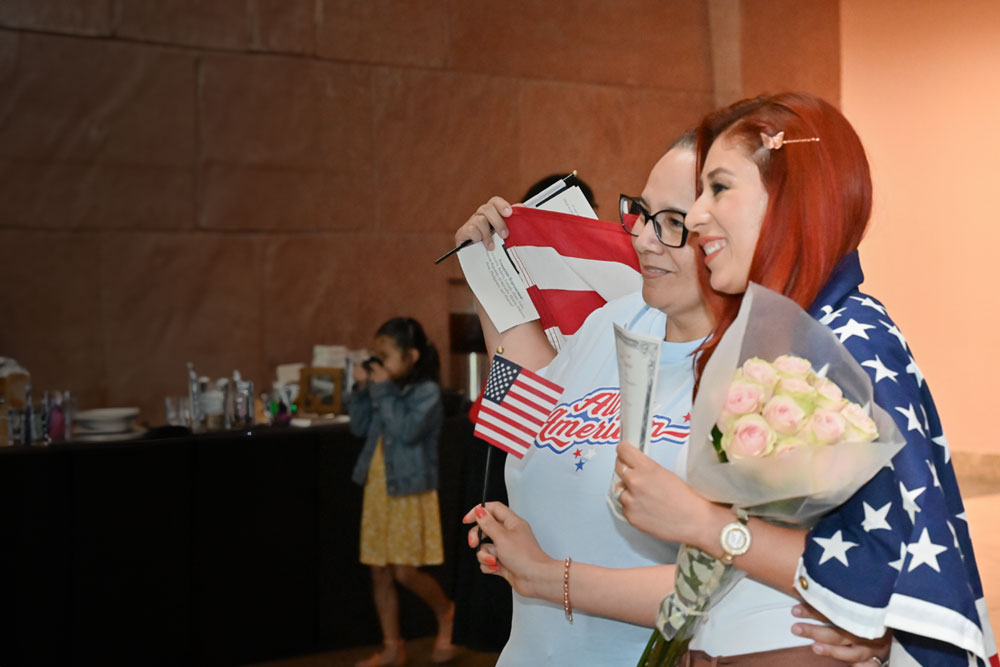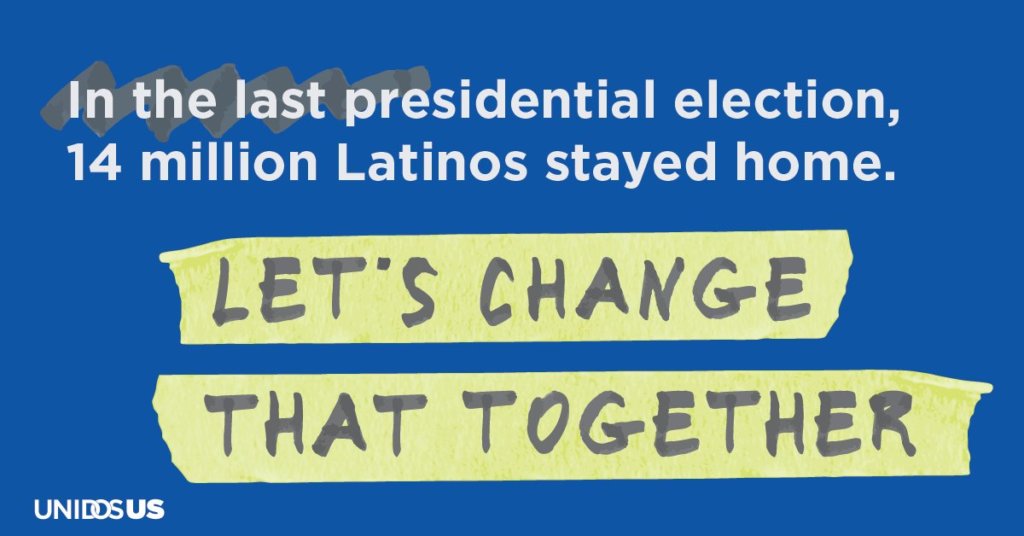12 years in the making: How I became a citizen of the United States of America
“Are you registered to vote?”
“No, I can’t yet, but soon, hopefully!”
On June 4, as I marched for Black lives to the Lincoln Memorial in Washington, DC, a person registering voters for Virginia, Maryland, and DC asked me that question. Little did I know, at that exact time, a letter from the U.S. Citizenship and Immigration Services (USCIS) was already in the mail scheduling my oath ceremony to finally become a U.S. citizen on June 17. I would actually be able to vote in the 2020 elections.
By Beatriz Paniego-Béjar, Content Specialist, UnidosUS
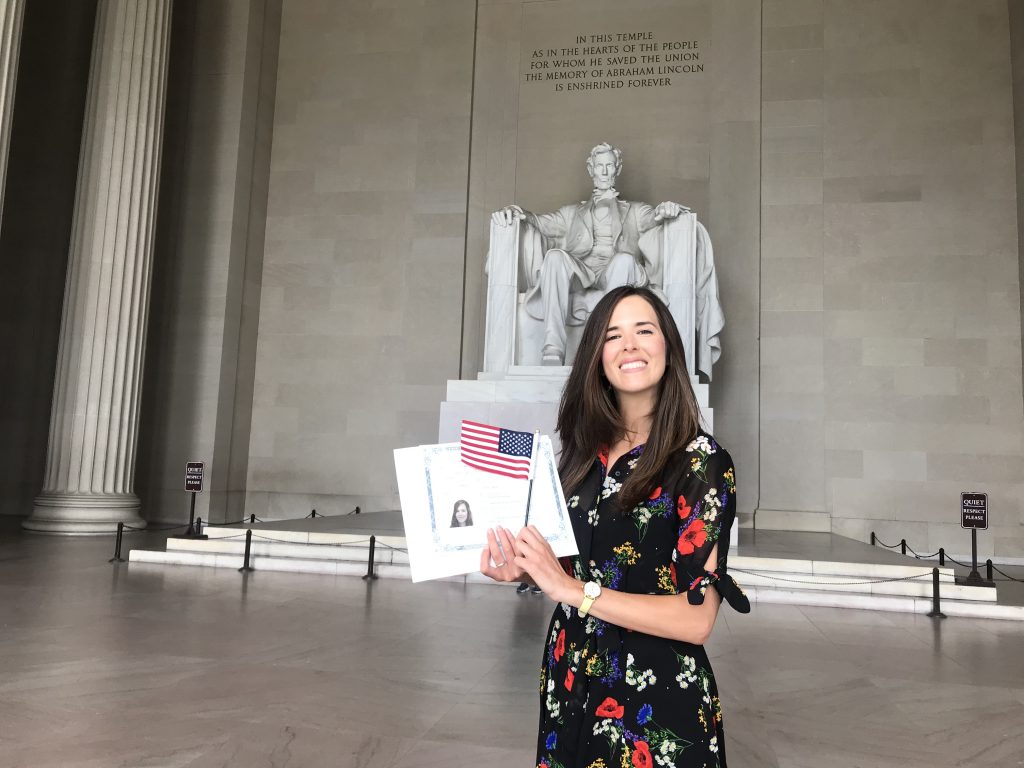
June 17 couldn’t arrive fast enough. After 12 years of student and working visas, working permits, parole cards, and finally the longed-for “green card,” becoming a citizen was a real dream come true, especially since I thought this day wasn’t going to arrive this year. USCIS offices closed on March 18 and naturalization ceremonies were cancelled, so the hope of taking my oath in 2020 little by little dissipated.
Until I received that letter on June 6. Then it became a reality.
However, now, another thought came to mind. The ceremony wasn’t going to be the event I had wished for: no guests were allowed because of the pandemic, and my mum, who was so excited to fly from Spain and see her daughter become an American, wasn’t going to be able to join me for this special occasion (I even asked the lady that conducted our induction if I could FaceTime her and—although she was very touched about the idea—it couldn’t be done.)
So I kept telling myself that it was ok, that the most important thing—becoming a U.S. citizen and being able to vote—was going to happen, that I was very fortunate to actually take the oath at this moment in time, and that that was all that mattered: the celebration with friends and family would come later.
TAKING THE OATH
In the era of physical distancing, the letter scheduling the ceremony listed “COVID-19 Safety Precautions,” including not arriving more than 30 minutes prior to the ceremony, wear a “face covering that cover the mouth and nose,” and bringing a black or blue pen.
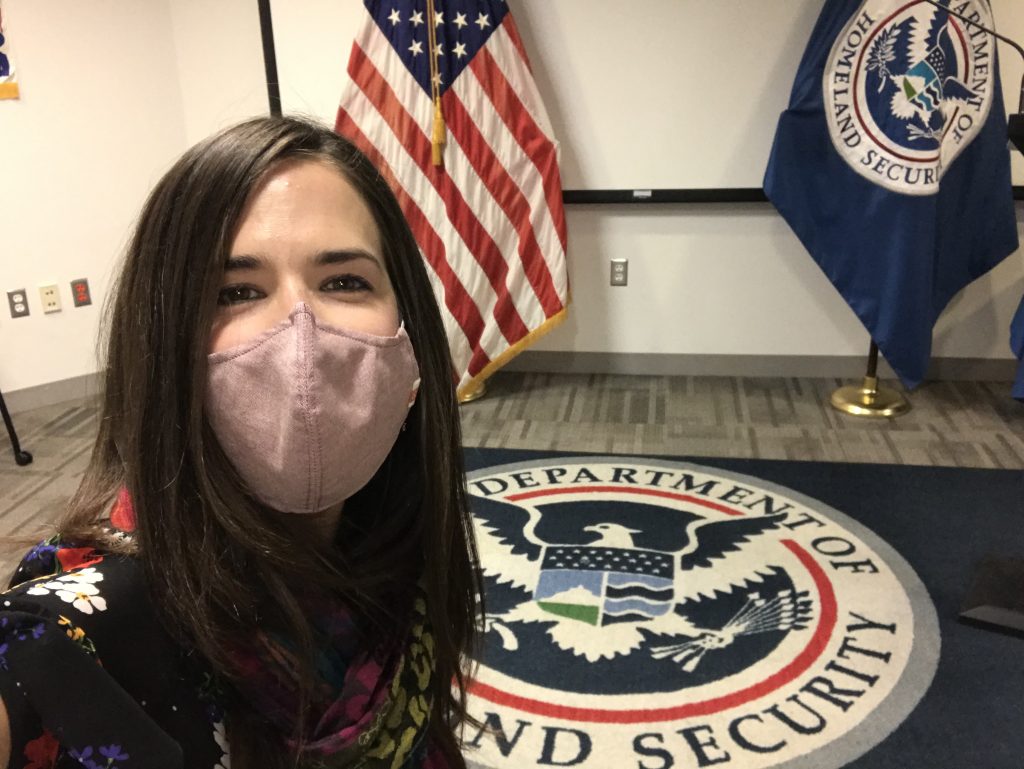
Thirty minutes before my ceremony I was lining up to go through security at the USCIS office in Fairfax, Virginia. Once inside, the first thing was to give your green card away: “Bye, bye, tarjeta verde. I’ll miss you.” It was a special card: I still remember the day I received it and the picture I took with it. Almost six years later, I took another picture before giving it away: I don’t want to forget about it. The officer behind the window, after asking me if I supported Real Madrid or Barcelona (Real Madrid, of course), checked me off a list and gave me a number, the seat where I will be sitting in the room upstairs.
Another agent, guided me to line up with my fellow 1 p.m. oath-takers, and after waiting for one more person, we all went up the stairs and were seen to the room where we would perform the ceremony.
There were three chairs per row, around eight rows, and in our assigned seats we found two envelopes, one with a message from the President of the United States, and another one with a lot of information for us, new Americans, including a copy of the Constitution, a voter registration form, and a passport application.
We were sat there barely five minutes before the ceremony started. The lady conducting it told us how different this ceremony was going to be, that usually it would last longer and that the room would be full with our loved ones. She talked about the contents in our envelopes, told us that we could access the videos that would be usually shown in a ceremony at the USCIS website, and she finally asked us to stand up, raise our right hand and repeat after her the Naturalization Oath of Allegiance to the United States of America:
“I hereby declare, on oath, that I absolutely and entirely renounce and abjure all allegiance and fidelity to any foreign prince, potentate, state, or sovereignty, of whom or which I have heretofore been a subject or citizen; that I will support and defend the Constitution and laws of the United States of America against all enemies, foreign and domestic; that I will bear true faith and allegiance to the same; that I will bear arms on behalf of the United States when required by the law; that I will perform noncombatant service in the Armed Forces of the United States when required by the law; that I will perform work of national importance under civilian direction when required by the law; and that I take this obligation freely, without any mental reservation or purpose of evasion; so help me God.”
And just like that I became an estadounidense, a citizen of the United States of America.
HOW DID I GET HERE?
I am not going to lie: even when I had the option, deciding to become a citizen wasn’t an easy choice to make. For me, wanting to become an American was as much a question of identity and belonging as it was a question of social responsibility. After 12 years of being an immigrant, feeling not from here and not from there, having the choice to apply for citizenship felt as much an honor as a wrenching decision.
In August 2019 I finally decided to do it: my colleague Laura Vazquez informed me that the application fees were going to increase later that year. But most importantly, I realized the United States was already my country, my home, and as my grandmother’s sister said: “Uno es de donde le da de comer,” “One is from where one feeds,” and the United States has been feeding me, literally and figuratively, for the last 12 years.
Now it was my turn to show my commitment to this country.
WHAT IT MEANS
After we took the oath, we were all, one by one, called to receive our Certificate of Naturalization, and asked to review it thoroughly to ensure all the information there was correct. A few of us stayed behind, wanting to take pictures in front of the U.S. flag with our brand new certificate and status. We were soon asked to leave the room because the next ceremony was scheduled to happen shortly. It seemed they had ceremonies programmed in 30-minute periods.
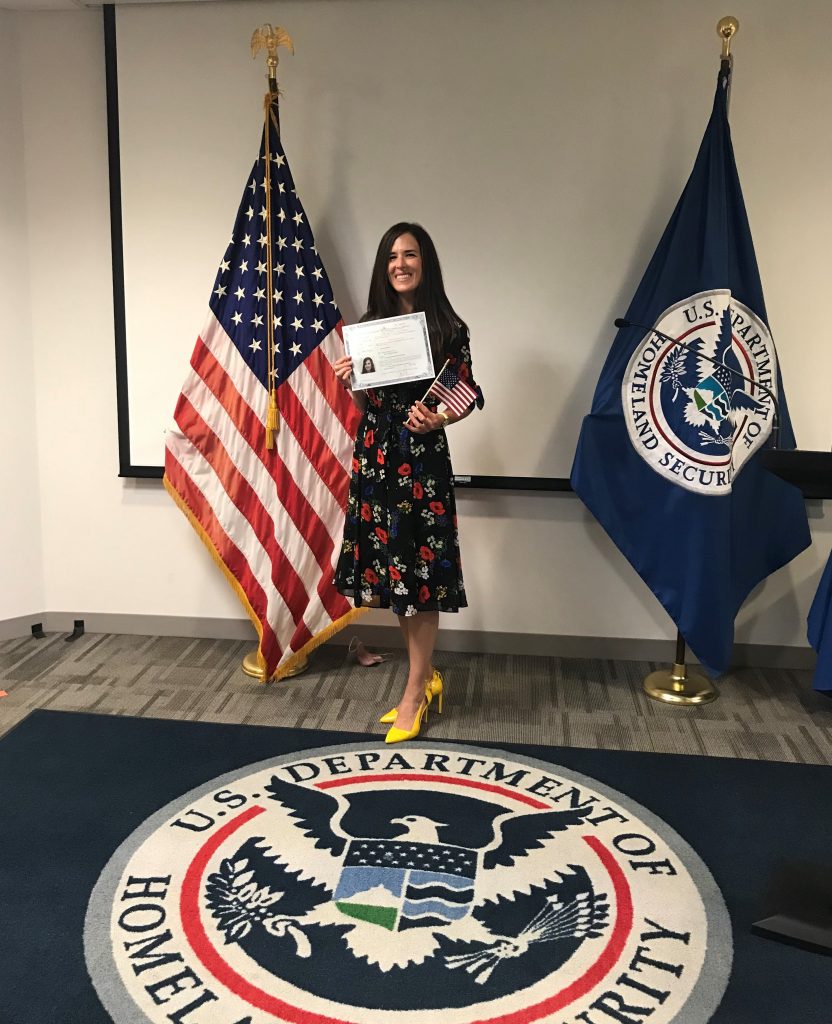
Everything happened so fast that I barely had time to feel as emotional as I thought I was going to feel. The strongest emotions reached me after receiving all the congratulation messages from family and friends, and one that truly touched me was from my beloved friend Josephine, who told me in happy tears: “They cannot take you away from us now.”
No, “they” can’t, and now it is also in my hands to ensure that the elected officials in office will respect immigrants as the hardworking, faithful, and resilient people that have made this country great for centuries.
I registered to vote two days after my ceremony, and now I cannot wait for November 3 to arrive.

